Splendid Waxcap
A beautiful mushroom that can hard to distinguish from the Crimson Waxcap. The surest way to tell them apart is by drying one as the Splendid Waxcap smells of honey as it’s drying but this means picking a rare mushroom. It is best to go by the different stems (see below) although this will not provide a conclusive identification.
| Mushroom Type | |
| Common Names | Splendid Waxcap (EN), Cap Cwyr Ysblennydd (CY), Wilgotnica Okazała (PL) |
| Scientific Name | Hygrocybe splendidissima |
| Synonyms | Hygrocybe splendidissimus |
| Season Start | Oct |
| Season End | Dec |
| Average Mushroom height (CM) | 4-10 |
| Average Cap width (CM) | 2-10 |
Cap
2-10 cm. The deep red/scarlet cap starts conical shaped and flattens out retaining a broad, fairly flat umbo. The cap is usually dry feeling if there has been no rain. As the mushroom matures the cap starts loosing it’s vibrant colour and becomes pail yellow/buff.
Gills
The gills are widely spaced and have visible lateral ‘veins’ running between them. They are similar in colour to the cap but usually with pail or yellow edges. Free to slightly joined to the stem (adnexed).
Stem
4-10 cm long, 0.5-2 cm diameter. Scarlet with a yellowing base. The stem is usually twisted, flattened or has a fold running vertically.
Habitat
Grasslands with short grass, usually cropped by animals. More common on the moors of Scotland and Wales, fairly rare in England and Ireland.
Possible Confusion
The Crimson Waxcap (Hygrocybe punicea), pictured, is very similar but has a greasier feeling, deeper red cap and the stem is usually more cylindrical without the twists and folds.
The Scarlet Waxcap (Hygrocybe coccinea) is smaller with a thinner stem and red flesh.
The Blackening Waxcap (Hygrocybe conica) is smaller and the flesh will discolour black when bruised or even just touched.
Spore Print
White. Ellipsoid.
Frequency
Not common.
Other Facts
Waxcaps are becoming fairly rare due to loss of habitat so they should only be eaten when found in profusion and some mushrooms should always be left behind. The mushroom I used for the flesh image was found on a moor in Wales where I find many every year, some of them already uprooted, probably by sheep.



 (9 votes, average: 3.89 out of 5)
(9 votes, average: 3.89 out of 5)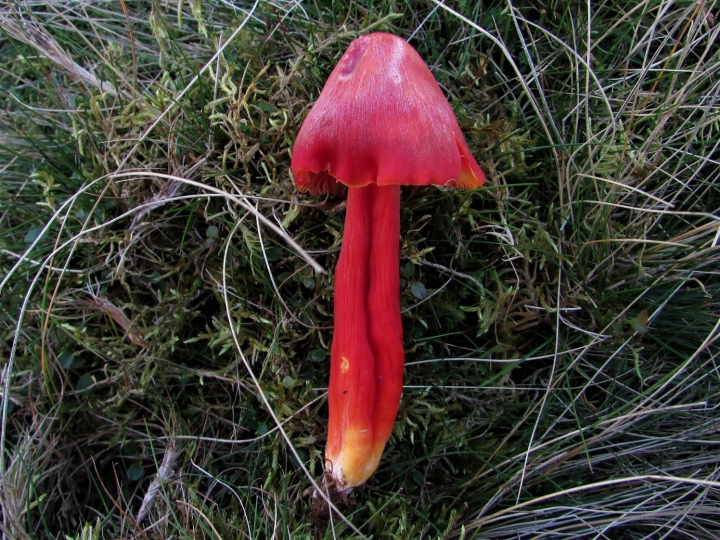
















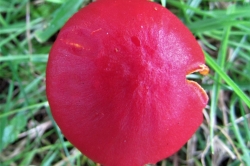
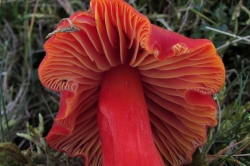
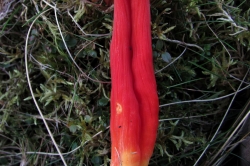
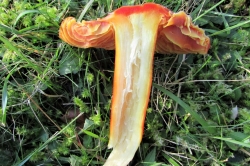
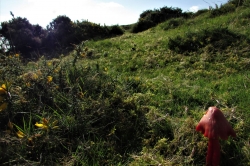
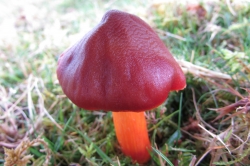





COMMENTS